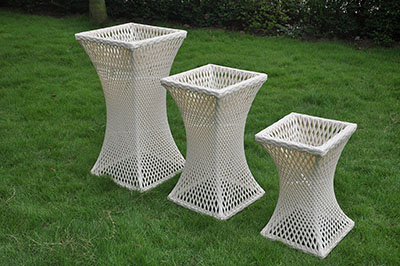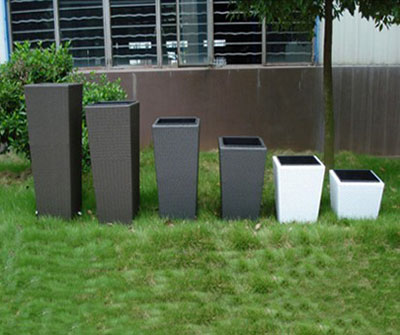The interaction of the ink system (at the end of the article) To achieve the saturation of certain colors in the Munsell Color Atlas, high-strength inks must be used. The inks used in this study were produced by different manufacturers and their properties (results measured with a spectrophotometer) were as follows: Blue Pigment 5:3 (C), Red Pigment 57:1 (M) Yellow Pigment 14 (Y) , Black pigment 7 (K), Orange pigment 16 (O) Green pigment 7 (G), Purple pigment 23 (V). Next, based on the visible spectrum, the corresponding data curve can be drawn from the above data, and the curve can be used to compare the strength and density of inks produced by different manufacturers. In order to achieve the best printability and to ensure reproduction of the range of gradation, if the intensity of the ink used is relatively high, the required ink layer is relatively thin. Based on these spectral curves, we can determine the strength and density of various pigments. Optimizing the transfer performance of the ink In order to improve the ink transfer performance of the ink system while improving the printing process or predictability, the anilox roll was tested using these high-strength inks (Figure 5). The higher the concentration of pigment in the ink, the thinner the ink layer is needed to achieve the best printability and highest color intensity. Anilox rolls with different ink transfer rates are used. Here, anilox rolls of 1.7 BCM/in2, 2.0 BCM/in2, 2.3 BCM/in2, 2.6 BCM/in2 and 3.0 BCM/in2 are used. After printing, a series of corresponding steps are obtained. The scales are printed under the optimal conditions according to the pre-defined technical parameters (see Table 2). Throughout the printing process, pay close attention to ghost markings, ink density, and proper pressure. Table 2 Materials and conditions used in the study Characteristics and conditions Values ​​Printing speed 60 ft/min Films Filament 133 lines/inch Plate type UVP plate thickness 0.45 inch Exposure time Back exposure 4.5 seconds, main exposure 17 minutes Rinse time 18 minute plate relief density 0.24 inch plate drying time 24 hours after processing 10 minutes ink viscosity measured with the 3rd Zahn cup, controlled between 20-30 seconds PH value of the ink is measured with a PH measuring instrument, controlled at 8.6-9.2 Between the substrate material C1S and the white cardboard because the density meter does not have the function of calculating the density of purple (V), orange (O), and green (G), so in the test of the anilox roller, the ultra-color gamut color and its actual The ground density values ​​are calculated from the spectral data. The results show that the greater the amount of ink transferred by the anilox roller, the higher the density value of the obtained solid patch. Moreover, the general printing contrast is also relatively high (Figures 6, 7, 8, 9, 10). If the network occurs and pastes, you cannot use an anilox roll with a large amount of ink, otherwise it will cause smear and printed matter to be dirty. This is because when the number of screens is 133 lines/inch, and the concentration of the pigment in the ink dispersion system is relatively high, this is easily the case. The greater the amount of ink transferred by the ink, the greater the amount of ink released and delivered, which may cause the expansion of small outlets. Under the above printing conditions, the transfer effect of the ink was the best when an anilox roller with an engraving angle of 60 degrees, an ink transfer amount of 2.0 BCM, and a screen number of 750 lpi was used. Print characterization and the role of color management systems The ANSI IT8.7/3 color standard uses both traditional CMYK four-color printing blocks and color lines to replace color blocks printed by ink systems (CMYK, OMYK, and CGYK). Mainly for the use of four color ink combinations to achieve high-strength color printing, and to achieve the best printability. Due to the lack of corresponding ICC setup software in the past, that is to say, the software and hardware of the previous color management are few, and the phenomenon of color mismatch between the input device and the output device often occurs. The density of the color patches printed in the same anilox roll test was matched to the solid density on the IT8.7/3 color scale. The printed color patches are measured and the spectral data is converted into the corresponding CIELab data, which can then be plotted against these data.
Rattan Flower Pot
Rattan
Flower pot
is suit for outdoor garden usage for long time. The material is UV resistant PE
rattan and 1.2mm thickness aluminum frame with powder-coated.
Outstanding weaving and structural integrity make our rattan flower pot a welcome addition outdoors. Rattan fibers are smoothly double woven around concealed
powder-coated aluminum frames. Gently angled backs and
wide arms encourage restful lounging.
·
Traditional forms with a spacious, inviting scale
·
Handwoven premium resin wicker UV resistant
·
Rust-resistant powder-coated frames
·
Different size and design for your selection
·
Accept OEM, ODE design, factory price
We
have different design rattan flower pot, different size for your selection, you
can decorate your home or garden, make your life clean and neat.


If
you have any questions, please contact with us directly. Rattan Flower Pot are
produced by Golden Eagle Outdoor Furniture With High Quality and Good
Appearance. Welcome you can visit our Factory.For any inquiry,Please send mail
directly to us.
Rattan Flower Pot,Outdoor Rattan Flower Pot,Garden Rattan Flower Pot,Patio Rattan Flower Pot,Poly Rattan Furniture
Golden Eagle Outdoor Furniture Co., LTD. , https://www.gesunumbrella.com

